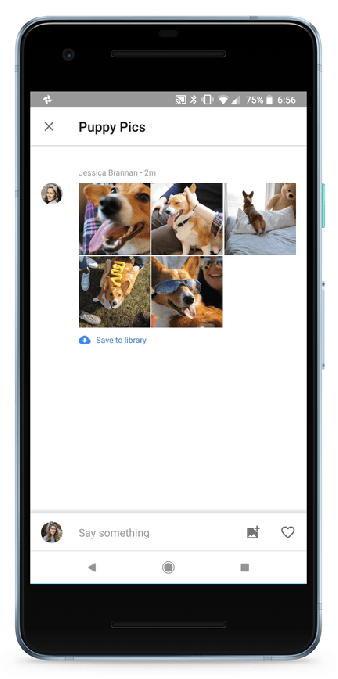Canonical, the company best known for its Ubuntu Linux distribution, is on a path to an IPO. That’s something Canonical founder and CEO Mark Shuttleworth has been quite open about. But don’t expect that IPO to happen this year.
“We did decide as a company — and that’s not just my decision — but we did decide that we want to have a commercial focus,” Shuttleworth told me during an interview at the OpenStack Summit in Vancouver, Canada today. “So we picked cloud and IoT as the areas to develop that. And being a public company, given that most of our customers are now global institutions, it makes for us also to be a global institution. I think it would be great for my team to be part of a public company. It would be a lot of work, but we are not shy of work.”
Unsurprisingly, Shuttleworth didn’t want to talk about the exact timeline for the IPO, though. “We will do the right thing at the right time,” he said. That right time is not this year, though. “No, there is a process that you have to go through and that takes time. We know what we need to hit in terms of revenue and growth and we’re on track.”
Getting the company on track was very much Shuttleworth’s focus over the course of the last year. That meant killing projects like the Ubuntu Phone (which Shuttleworth said was “painful,”) as well as the Unity desktop environment. Instead, the company’s focus is now squarely on helping enterprises stand up and manage their private clouds — no matter whether those run OpenStack, Kubernetes or a combination of those.
That doesn’t mean Canonical has forgotten about the desktop, though. Shuttleworth told me that the desktop team still has the same size as before. He also noted that the desktop is still a passion for him.
“We took some big risks a year ago,” he said. “We cut a bunch of stuff that people loved about us. We had to see if people were going to respond commercially.” That move is paying off now, though. During a keynote earlier today, Shuttleworth noted that Canonical is now in talks for about 200 new deployments for 2018 — up from about 40 in 2017.
While the hype around OpenStack has died down considerably over the course of the last two years, Canonical is still seeing good growth there — especially now that there are only a few major players left, including RedHat, which he name-checked a number of times during both his keynote and our conversation.
Why are things going well for Canonical when others couldn’t make a business out of OpenStack? “I believe for this community — the OpenStack community — it’s really important to deliver on the underlying promise of more cost-effective infrastructure,” he said. “You can love technology and you can have new projects and it can all be kumbaya and open source. In practice, to me, most of the stuff that we saw at OpenStack was bullshit. The stuff that really matters is computers, virtual machines, virtual disks, virtual networks. So we ruthlessly focus on delivering that and then also solving all the problems around that.”
Today, Canonical can deliver an OpenStack platform to an enterprise in two weeks — with all of the hardware and services in place. “I don’t mind being a bit controversial because we are delivering the promise of OpenStack,” he said. “The promise of OpenStack wasn’t delivering endless summits and endless new projects and endless new ideas.” That, he said, is exactly the kind of bullshit he was referring to in his earlier comments.
Looking ahead, Shuttleworth noted that he’s especially interested in what Canonical can do around IoT solutions, too. Thanks to Ubuntu Core and its Snap system, it has all the tools in place, including a lightweight management layer. The company also is focusing heavily on getting more customers in the financial services sector. No doubt, having a bunch of large banks and brokerages as reference customers will help the company when it comes to its IPO — and my guess is that we can expect that one to happen next year.

 But with Instagram’s newest feature, at least users know when they’ve seen everything and can stop scrolling without FOMO. Instagram is showing some users a mid-feed alert after a bunch of browsing that says “You’re All Caught Up – You’ve seen all new post from the past 48 hours.” When asked about it, Instagram confirmed to TechCrunch that it’s testing this feature. It declined to give details about how it works, including whether the announcement means you’ve seen literally every post from people you follow from the last two days, or just the best ones that the algorithm has decided are worth showing you.
But with Instagram’s newest feature, at least users know when they’ve seen everything and can stop scrolling without FOMO. Instagram is showing some users a mid-feed alert after a bunch of browsing that says “You’re All Caught Up – You’ve seen all new post from the past 48 hours.” When asked about it, Instagram confirmed to TechCrunch that it’s testing this feature. It declined to give details about how it works, including whether the announcement means you’ve seen literally every post from people you follow from the last two days, or just the best ones that the algorithm has decided are worth showing you.
 The one on the Earth side will be put into a slightly slower and lower orbit than the one on the space side, and after they’ve spread out to a distance of 137 miles, the lower satellite will boost itself upwards and synchronize with the other.
The one on the Earth side will be put into a slightly slower and lower orbit than the one on the space side, and after they’ve spread out to a distance of 137 miles, the lower satellite will boost itself upwards and synchronize with the other. The original mission worked by detecting tiny changes in the difference between the two satellites as they passed over various features — these tiny changes indicate how mass is distributed below them and can be used to measure the presence of water. GRACE-FO
The original mission worked by detecting tiny changes in the difference between the two satellites as they passed over various features — these tiny changes indicate how mass is distributed below them and can be used to measure the presence of water. GRACE-FO 

 More important are the software changes. There’s a new mobile app for iOS and Android that should make loading and sharing documents easier. A new screen sharing mode sounds handy but a little cumbrous — you have to plug it into a PC and then plug the PC into a display. And PDF handling has been improved so that you can jump to pages, zoom and pan, and scan through thumbnails more easily. Limited interaction (think checkboxes) is also possible.
More important are the software changes. There’s a new mobile app for iOS and Android that should make loading and sharing documents easier. A new screen sharing mode sounds handy but a little cumbrous — you have to plug it into a PC and then plug the PC into a display. And PDF handling has been improved so that you can jump to pages, zoom and pan, and scan through thumbnails more easily. Limited interaction (think checkboxes) is also possible.